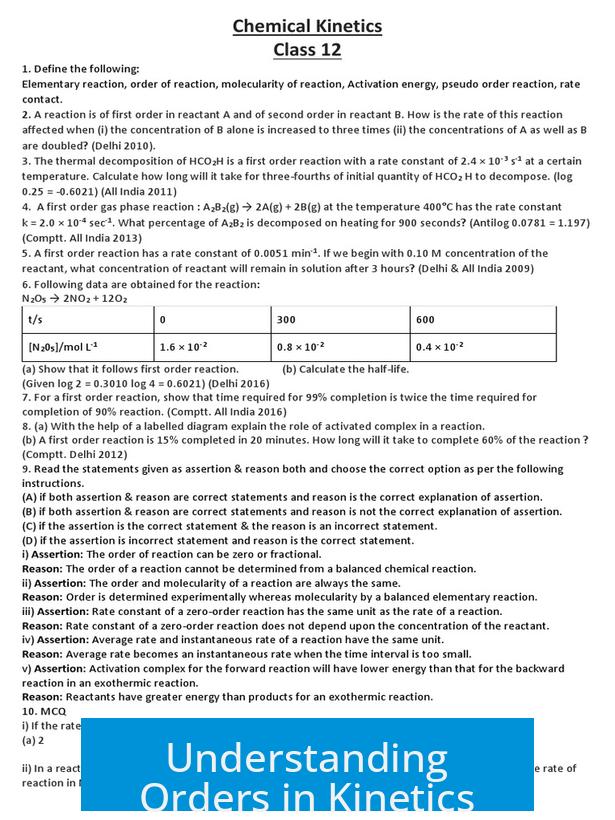Understanding Orders in Kinetics

Orders in kinetics are the exponents of reactant concentrations in the rate equation, representing how changes in these concentrations influence the reaction rate. They quantify the relationship between concentration and the speed of a chemical reaction.
Order of a Reactant
The order of a reactant is the power to which its concentration is raised in the rate law. For example, if the rate law contains [A]2, then the reaction is second order with respect to reactant A. This exponent is not necessarily tied to stoichiometric coefficients; it is determined experimentally.
Overall Order of Reaction

The overall order is the sum of all individual reactant orders in the rate equation. For instance, if the rate law is rate = k[A]1[B]2, the overall order is 1 + 2 = 3. This total order characterizes how the rate depends on the combined concentrations of all reactants.
What Orders Represent
Orders describe how changing reactant concentration affects reaction rate:
- First order means rate ∝ [Reactant]1. Doubling concentration doubles rate.
- Second order means rate ∝ [Reactant]2. Doubling concentration quadruples rate.
- Zero order means rate is independent of concentration changes.
This relationship applies to concentration changes primarily, though sometimes pressure plays a similar role, especially for gases.
Practical Example
If a reaction is first order in A and second order in B, doubling A increases the rate by 2 times, while doubling B increases the rate by 4 times. Changing B’s concentration has a stronger effect due to the higher order.
Key Takeaways
- Order is the exponent of reactant concentration in the rate law.
- Overall order sums all reactants’ orders in the rate equation.
- Orders indicate how rate changes with concentration, e.g., doubling a first order reactant doubles rate.
- Zero order means rate remains constant regardless of concentration change.





Leave a Comment